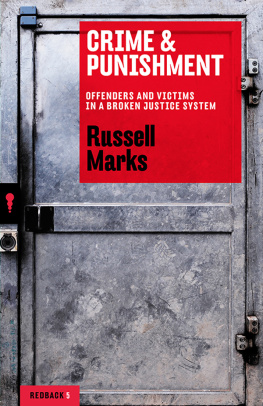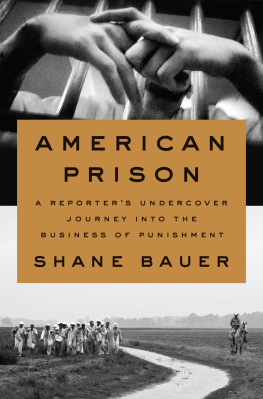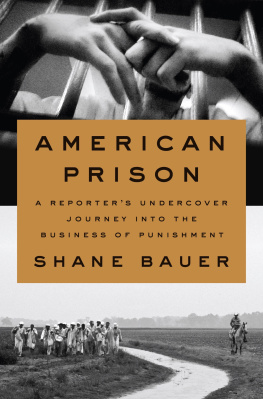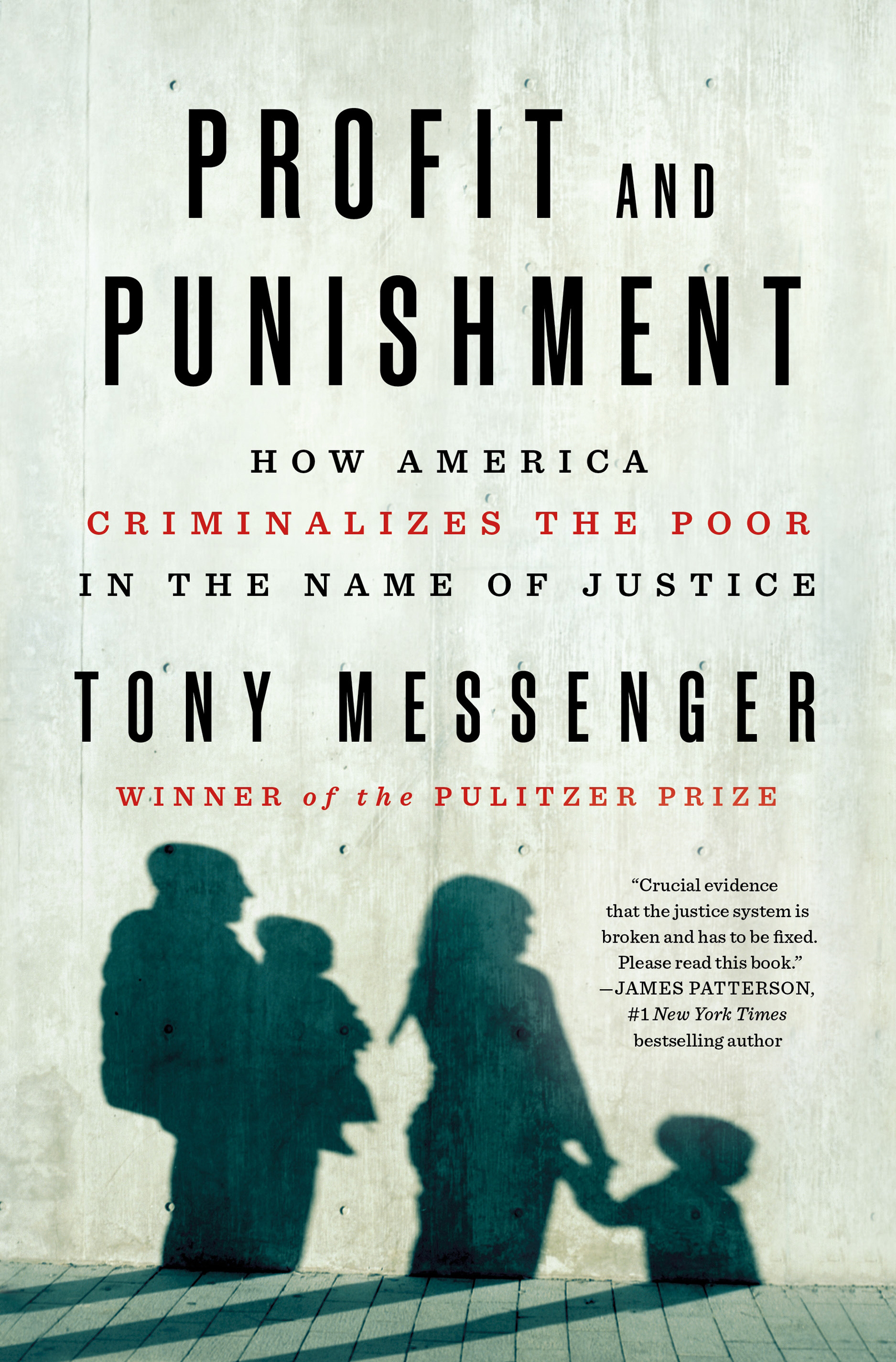Contents
Guide
Pagebreaks of the print version

The author and publisher have provided this e-book to you for your personal use only. You may not make this e-book publicly available in any way. Copyright infringement is against the law. If you believe the copy of this e-book you are reading infringes on the authors copyright, please notify the publisher at: us.macmillanusa.com/piracy.
To my wife and children:
Thank you for sharing me with the world.
People speak sometimes about the bestial cruelty of man, but that is terribly unjust and offensive to beasts, no animal could ever be so cruel as a man, so artfully, so artistically cruel.
Crime and Punishment, Fyodor Dostoyevsky
34 million
Number of Americans living in poverty.
$17,420
Highest income a single mother of one child can make to fall under federal poverty guidelines.
80 percent
Estimate of number of people in court system who qualify for public defender.
13 million
Number of misdemeanor cases in the U.S. per year.
$50 billion
Approximate amount of outstanding fines and fees owed various courts in U.S.
$15,900
Amount of money one impoverished Missouri defendant owed court after a year stay in jail that stemmed from a misdemeanor conviction for shoplifting an $8 tube of mascara.
400 percent
Amount court fines and fees have increased in North Carolina since the Great Recession.
Brooke Bergen had $60 in her pocket.
It was November 2018, and the cash was for her court appearance the next day. She hoped to scrounge up another $40 before her morning hearing. She asked me if that was enough.
Three figures seems more substantial to me, she said. Im freaking out. I really am afraid shes going to put me back in jail. Bergen was referring to Dent County Associate Circuit Court Judge Brandi Baird.
Almost every state in America has the statutory ability to charge defendants for a stint in jail. Some jurisdictions make allowances for those who cant afford to pay. Many dont. For roughly a year spent in the Dent County Jail, Bergens bill was $15,900. It was a sum she could never escape. There was no specific payment plan. She was scheduled to see the judge once a month and pay what she could. If that meant $100 a month, it would take her 159 payments, or more than 13 years, to pay off the debt.
The worst part, though, wasnt even the debta large sum, of course, more than she would make in a yearbut the requirement to show up in court every month or face the consequences. In other words, every four weeks, Bergen would have to spend half a day in the courtroom, answer to the judge, and agree to pay down her debt little by little. If she didnt show up, a warrant would be issued for her arrest.
We met for the first time at a coffee shop in Rolla, a college town in central Missouri, about thirty minutes north of Salem, where Bergen served time for stealing an $8 tube of mascara from a Walmart. Yes, for a minor shoplifting misdemeanor, Bergen spent a year in a run-down county jailwhere water drips down the concrete walls and black mold gathers around damp cornersand, for the privilege of staying there, owed the county five figures. For a person who had never held more than a minimum wage job, it was a mountain of debt, and it weighed on her heavily.
We were in the middle of the country, which is appropriate, because we were talking about a vexing problem affecting both big cities and small towns in every corner of the nation: the intersection of poverty and criminal justice. Bergen, who is white, is poor; has been her entire life. She has long, dark hair, high cheekbones, a toothy smile, and the sort of backstory that has become all the rage on made-for-TV dramas these days. After her mother died, she moved from Florida to the heart of the Ozarks. She never met her father. She married young to get out of the foster-care system, and then divorced. Three years earlier, she lost a baby to sudden infant death syndrome. In a town where everybody knows everybody elses business, people still whispered behind her back. She thought some people blamed her for her babys death.
This is meth, opioid, and heroin country, a place where peopleat the height of the opioid crisiswere consuming more pain pills per capita than most other counties in Missouri. Imagine every person who lives in the U.S. standing on a massive board that tilts precariously on a fulcrum. This is the place where that board reaches its balance.
Since late 2017, as the metro columnist for the St. Louis Post-Dispatch, Ive been writing about people like Bergenresidents of small towns like Salem that exist all over the state of Missouriwho have been put in jail because they couldnt afford various fines and fees imposed upon them by the courts.
Wait a minute, seasoned St. Louis lawyers would ask me: In Missouris rural counties, defendants get charged for jail time? Yes, and they often go back to jail if they cant pay. It was an aspect of the criminal justice system that even those whose job it was to know, like lawyers, were unaware of, or at minimum, gave little thought. However, once we began talking, most attorneys found the arrangement absurd. I agreed, and continued writing stories about people caught up in this scheme across the state.
These are not the stories you see in a typical Law & Order episode. Such portrayals of the criminal justice system, which may play an outsized role in the publics understanding of the issues, focus mostly on serious felony crimes and how theyre prosecuted. In the criminal justice system, the people are represented by two separate yet equally important groups, says the narrator in the opening credits. The police, who investigate crime, and the district attorneys, who prosecute the offenders. There is another side of the criminal justice system, perhaps its most significant feature, anchored by the financial burden placed upon poor people caught in its web of fines and fees.
While violent crimes like rapes and murders tend to dominate public attention, about 80 percent of the cases that make their way through the court systemmore than 13 million a yearare actually misdemeanors, small crimes like shoplifting, drug possession, speeding, driving under the influence, or simple assault. The vast majority of these cases, much like Bergens, have some sort of fee or court cost connected to them that a defendant, if convicted, must pay in order to be completely free of their legal obligations. These fines and fees often start at the time of the arrest and can continue even after a person has served their time in jail. In fact, many defendants, like Bergen, dont know how much they owe the court until they plead guilty or, in some cases, after theyve completed their sentence.
There are fines you may be familiar with, like a $100 penalty for speeding, or a $50 penalty for littering. Theyre meant as deterrents to minimize traffic accidents or keep our streets clean, for example. Then there are fees you may not be familiar with (unless youve experienced them firsthand), which is what Profit and Punishment will study and explore in great detail. They serve a different purpose: money earmarked by lawmakers as a backdoor tax. Some pay for the criminal justice system itselfsuch as the salaries of clerks and public defenders, or the retirement funds of sheriffs and judgesand others pay for a variety of municipal, county, or state needs. The latter include costs associated with child-abuse investigations, brain-injury funds, law libraries, or courthouse renovations. In most jurisdictions, the largest of these fines is the bill for time in jail, as if one has just spent a year in a hotel. This is what happened to Bergen, and it tethered her to the judicial system for years.








